All Science
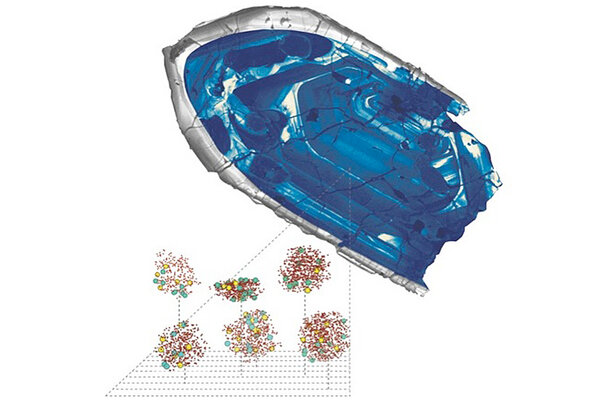 Scientists confirm discovery of oldest piece of the Earth
Scientists confirm discovery of oldest piece of the EarthA tiny bit of zircon crystal found in Australia has been dated to 4.375 billion years old, plus or minus 6 million years, making it the oldest piece of our planet discovered so far.
 Google Maps reveals mysterious spiral in Egyptian desert
Google Maps reveals mysterious spiral in Egyptian desertJust a short distance from the Red Sea is a one-million-square-foot pattern of interlocking spirals etched in the desert sands. Who – or what – put it there?
 A rocket with landing gear? SpaceX seems to think it's a good idea.
A rocket with landing gear? SpaceX seems to think it's a good idea.The private spaceflight company SpaceX is putting landing gear on its Falcon 9 rocket, with the aim of making it reusable for future launches.
 Volcanoes, trade winds may be behind 'pause' in global warming
Volcanoes, trade winds may be behind 'pause' in global warmingA 12-year pause in global warming, after 20 years of rapidly rising surface temperatures, has scientists probing for the reason. Volcanic eruptions and undersea heat storage are emerging as likely explanations.
 Sun spews huge solar flare
Sun spews huge solar flareAn X4.9-class solar flare that erupted Monday is so far the strongest this year. The bright flash of light was seen from the Earth, but the material ejected from the sun will most likely not reach our planet.
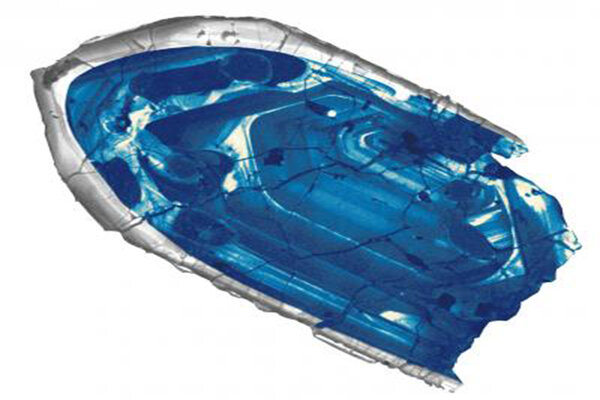 What can a 4.4-billion-year-old bit of Earth's crust tell us about the origins of life?
What can a 4.4-billion-year-old bit of Earth's crust tell us about the origins of life?Researchers have confirmed that a tiny clump of crystals are the oldest known thing on Earth, supporting the hypothesis that our planet cooled relatively early on after it formed.
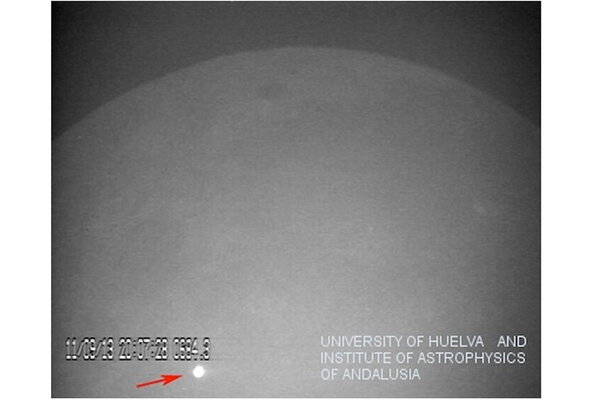 Brightest recorded explosion on moon: What caused it?
Brightest recorded explosion on moon: What caused it?On Sept. 11, 2013, a flash as bright as the North Star appeared on the moon, leaving behind a fresh crater roughly 131 feet wide, say astronomers.
 Can a Muslim take a one-way trip to Mars? A fatwa says no.
Can a Muslim take a one-way trip to Mars? A fatwa says no.A one-way journey to Mars is not justifiable under Islam, according to an edict issued by a fatwa committee under the General Authority of Islamic Affairs and Endowment in the United Arab Emirates.
- Artificial muscles from fishing line? New possibilities.
New technologies emerge as researchers find ways to produce artificial muscles from polymers. From artificial limbs to robots to temperature-controlled clothing, the range of possible uses is vast.
 Google-backed crowdsourced website aims to track forest destruction, but can it?
Google-backed crowdsourced website aims to track forest destruction, but can it?An online tool promises 'near-real time' monitoring of deforestation, but critics argue that it doesn't distinguish between forests and plantations.
 Can we stop the lemur from going extinct?
Can we stop the lemur from going extinct?From ecotourism to encouraging long-term research in critical lemur sites, researchers have proposed a three-year emergency action plan to prevent the wide-eyed prosimians from going extinct.
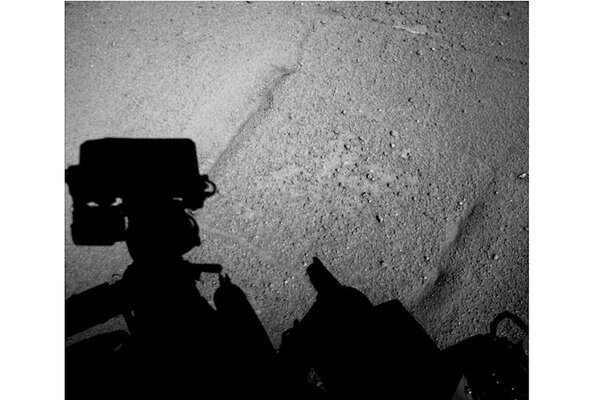 How does the Curiosity Mars rover preserve its wheels? By driving backward, of course.
How does the Curiosity Mars rover preserve its wheels? By driving backward, of course.Over the past few months, the six wheels on NASA's Curiosity Mars rover have become increasingly beaten up. To help reduce wear, NASA engineers threw it in reverse.
 Tiny spinning star slammed by billion-ton space rock, say astronomers
Tiny spinning star slammed by billion-ton space rock, say astronomersA pulsar located 37,000 light years away seems to have been pummeled by space debris, including a billion-metric-ton asteroid, say astronomers.
 Apparently, ants build rafts. Out of their babies.
Apparently, ants build rafts. Out of their babies.Ants navigating through floods link with each other to build rafts, placing their buoyant offspring at the bottom of the raft, finds a new study.
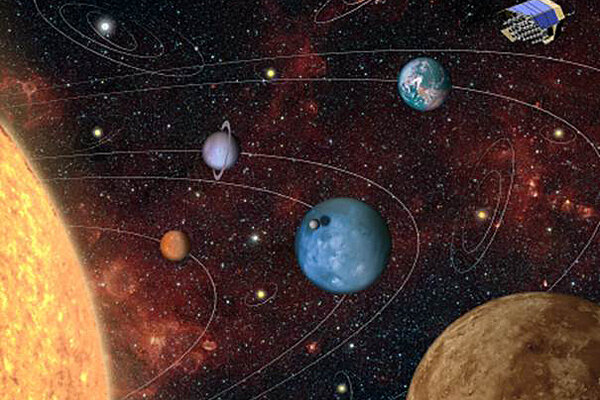 Alien-seeking space observatory to hover between Earth and sun
Alien-seeking space observatory to hover between Earth and sunThe European Space Agency is set to build a space-based observatory to scan the cosmos for habitable worlds outside our solar system.
 What made a star explode? NASA now can sift through its entrails.
What made a star explode? NASA now can sift through its entrails.Until now, researchers have had to rely on computer simulations to explain what happens moments before the blast that rips a star apart. But NASA's orbiting X-ray observatory NuSTAR lets scientists glimpse conditions at star's core.
 After the Large Hadron Collider, an Even Larger Hadron Collider?
After the Large Hadron Collider, an Even Larger Hadron Collider?If CERN gets its way, its next particle accelerator will be even bigger and more powerful than the behemoth Large Hadron Collider.
 Exactly how much force does it take to rip an ant's head off? New research offers clues.
Exactly how much force does it take to rip an ant's head off? New research offers clues.A study involving a centrifuge, glue, and several unfortunate field ants seeks to answer a question that has long puzzled entomologists: How fast can you spin an ant around before its head detaches from its body?
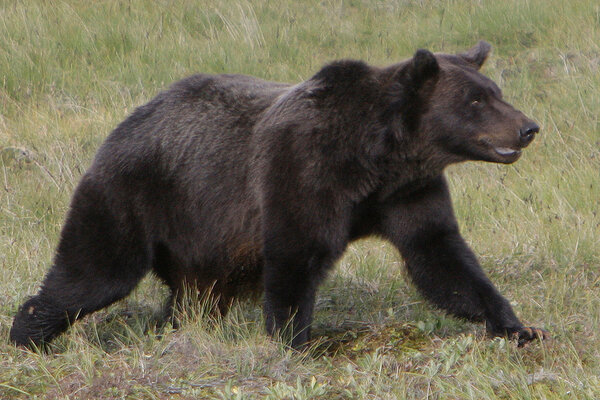 Why did the bear cross the road? (Hint: Not just to eat the chicken.)
Why did the bear cross the road? (Hint: Not just to eat the chicken.)A genetic study found that black bears and grizzly bears do indeed use the wildlife crossings along the Trans-Canada Highway, mating with bears on the other side.
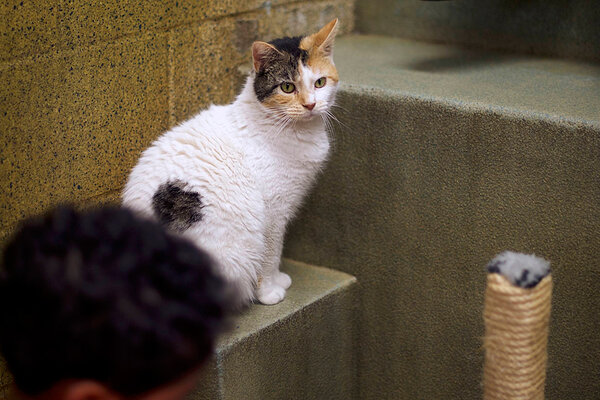 Why do calico cats look so funky? Geneticists explain.
Why do calico cats look so funky? Geneticists explain.Calico cats obtain their fur color from the inactivation, or 'silencing,' of one of their X chromosomes. Scientists have now discovered a technique allowing them to observe the inactive X chromosome of female cells in immortalized mouse cell lines.






















